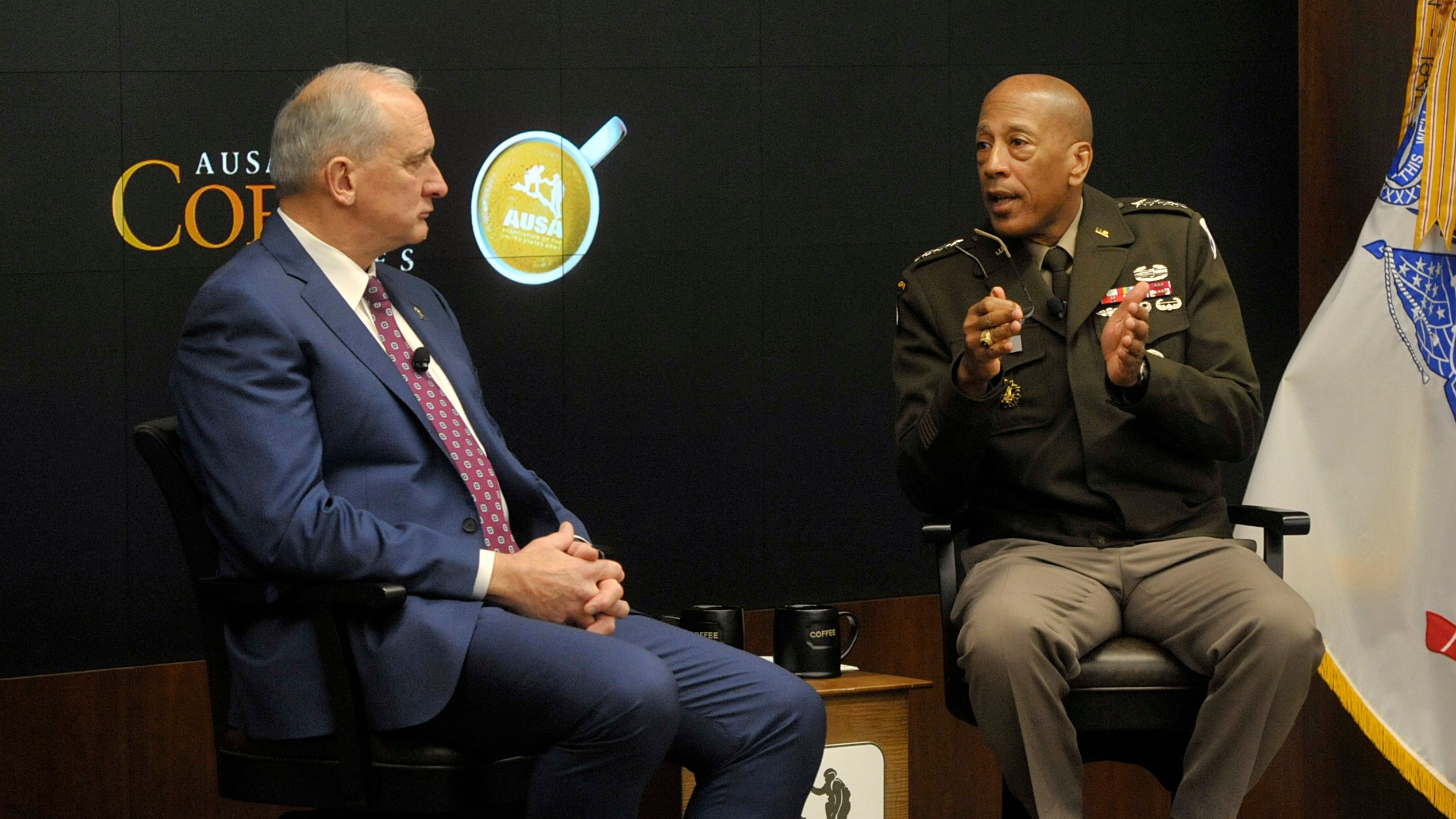Hamilton Urges Industry to Help Boost Army Sustainment
Hamilton Urges Industry to Help Boost Army Sustainment

Industry partners will be essential to supporting Army large-scale combat operations in a contested environment, said Gen. Charles Hamilton, commander of Army Materiel Command.
Speaking March 13 at a breakfast hosted by the Association of the U.S. Army as part of its Coffee Series, Hamilton called on industry to help the Army sustainment community meet one of the service’s top priorities—the delivery of ready combat formations.
“It’s important that we talk frequently,” Hamilton told event attendees, many of whom are industry partners. “We’ve got to get a complete shared understanding of the problem set, and I can’t do what I do to support the Army without you.”
Hamilton, who has been in command since March 16, 2023, said that his “big focus area” has been to meet one of Army Chief of Staff Gen. Randy George’s four focus areas, which is to “deliver combat-ready formations.”
He recalled being invited to George’s residence along with his peers from the Army’s other major commands for what was to be a casual dinner, “then the white boards came out, so we started working” on the chief of staff’s priorities, he said. Hamilton pointed to the COVID-19 pandemic as having created “the biggest challenge” in resupplying the force now, as some of the Army’s small business partners, who supplied critical repair parts, kits, assemblies and components used to maintain equipment, were unable to stay in business.
“We lost a lot of our second and third tier suppliers, and so that’s affecting the tempo, the pace I can get those parts and get them out to the force,” Hamilton said, adding that foreign military sales for operations in Europe also have created competition for parts resupply.
To meet that challenge, he said, Materiel Command has tapped into industry and innovation centers and ramped up the creation of some parts with 3D printing where possible. But it will take years without industry help, he said.
“I would challenge anyone here, if you can come up with a solution, I don’t care if it’s 3D or you can get some great artists and professionals out in industry, there’s an opportunity,” Hamilton said. “I’m not afraid to say it out loud, a pretty big opportunity, that means a lot of money to be made in this space.”
New capabilities that could change the way the sustainment enterprise operates also are emerging, Hamilton said, as demonstrated at Project Convergence, a joint and multinational experimentation event that took place this month at the Marine Corps’ Camp Pendleton and at the National Training Center at Fort Irwin, both in California.
“I am very optimistic looking at the autonomous vehicles I saw there, the drones,” Hamilton said. “We’ve got to get to that level of resupply, and that’s why we’ve got to be so precise in the future.”
When it comes to sustaining the warfighter, he said, “I’ve got to get it right every time in order for that brigade, task force or division to be able to maintain that momentum in the fight. Sustainment is about warfighting. Period.”

